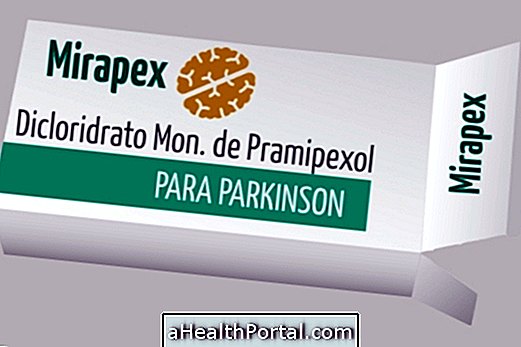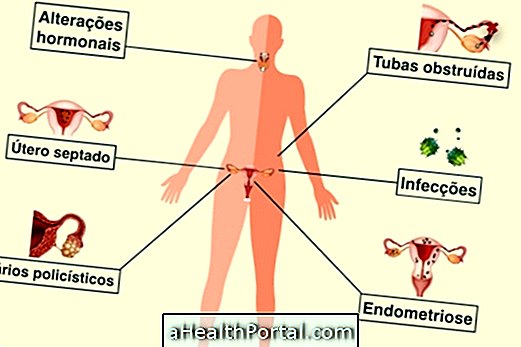Paracetamol is a medicine widely used to lower fever and to temporarily relieve mild to moderate pains such as colds, headaches, body aches, toothache, back pain, muscle aches or pains associated with menstrual cramps .
If it is recommended by your doctor, this medication can be used in children, adults and pregnant women. However, the dose should always be adhered to, otherwise paracetamol may cause serious health problems, such as liver damage.

What is it for
Paracetamol is an analgesic and antipyretic that is available in several doses and presentations and can be obtained in pharmacies in generic or under the brand name Tylenol or Dafalgan. This medication can be taken to lower the fever and to relieve the pain associated with colds, headache, body pain, toothache, back pain, muscle aches or pains associated with menstrual cramps.
Paracetamol is still available in combination with other active substances, such as codeine or tramadol, for example, thus exerting a greater analgesic action, or associated with antihistamines, which are widely used associations in influenza and cold states. In addition, caffeine is often added to paracetamol, to potentiate its analgesic action.
How should this medicine be taken?
Paracetamol is available in several doses and presentations, such as tablets, syrup and drops, and should be taken as follows:
1. Paracetamol drops 200 mg / mL
The dosage of Paracetamol drops depends on age and weight, thus:
- Children under 12 years: The usual dose is 1 drop / kg until the maximum dosage of 35 drops, with intervals of 4 to 6 hours between each administration.
- Adults and children over 12 years of age: The usual dose is 35 to 55 drops, 3 to 5 times a day, at intervals of 4 to 6 hours, within 24 hours.
For infants and children under 11 kg or 2 years, consult your doctor before use.
2. Paracetamol syrup 100 mg / mL
The infant dose of paracetamol ranges from 10 to 15 mg / kg / dose, with intervals of 4 to 6 hours between each administration, according to the following table:
| Weight (kg) | Dose (mL) |
|---|---|
| 3 | 0.4 |
| 4 | 0.5 |
| 5 | 0.6 |
| 6 | 0.8 |
| 7 | 0.9 |
| 8 | 1.0 |
| 9 | 1.1 |
| 10 | 1.3 |
| 11 | 1.4 |
| 12 | 1.5 |
| 13 | 1.6 |
| 14 | 1.8 |
| 15 | 1.9 |
| 16 | 2.0 |
| 17 | 2.1 |
| 18 | 2, 3 |
| 19 | 2.4 |
| 20 | 2.5 |
3. Paracetamol tablets
Paracetamol tablets should only be used by adults or children over 12 years.
- Paracetamol 500 mg: The usual dose is 1 to 3 tablets, 3 to 4 times daily.
- Paracetamol 750 mg: The usual dose is 1 tablet 3 to 5 times daily.
The duration of treatment depends on the disappearance of the symptoms.
Possible side effects
The most common side effects that can occur with the use of acetaminophen are urticaria, itching and redness in the body, allergic reactions and increased transaminases, which are enzymes present in the liver, the increase of which can lead to problems in this organ.
When not to use
Paracetamol should not be used by people who are allergic to this active substance or to any of the other ingredients in the medicine. In addition, it should also not be used by people who drink large amounts of alcohol, have liver problems or are already taking another drug containing paracetamol.
Can paracetamol be used in pregnancy?
Paracetamol is an analgesic that can be taken during pregnancy, but it should be used as little as possible and always under medical supervision. The daily dose of up to 1g of paracetamol per day is considered safe, however, the ideal is to favor natural painkillers, such as ginger or rosemary for example. Here's how to prepare a natural painkiller for pregnancy.



















